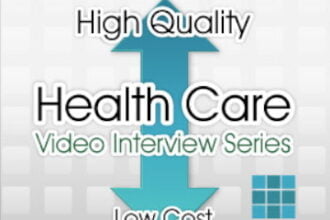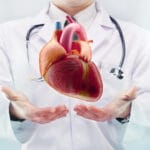I was invited to contribute a column introducing digital health
I was invited to contribute a column introducing digital health to the readers of Kulturaustausch, a journal for international perspectives published by the German Institute for Foreign Cultural Relations, funded in part by Germany’s Foreign Office. Timing of publication serendipitously coincided with the Health 2.0 conference (agenda; tweetstream), where I moderated a panel. Here’s what the column looked like before being translated into German for the current issue:
Health care diagnostic and treatment tools are on a trajectory of development that is making science fiction of five decades ago into fact. Two current examples: The X Prize contest to develop a real “tricorder” – a handheld wireless device that monitors and diagnoses health conditions – comes to us courtesy of Star Trek (the original U.S. television series was set in the 23rd century) and the recently-announced prototype of a miniaturized implantable continuous blood monitor the size of a 1.5 cm length of pencil lead developed by a team at EPFL in Lausanne brings to mind the movie Fantastic Voyage, in which a surgical team in a submarine was miniaturized and injected into a patient’s bloodstream.
The electrochemical biosensor is the brainchild of a team of biomechanical engineers including Sandro Carrara. By placing miniature sensors below the skin (but not in the bloodstream) and placing a bluetooth-enabled receiver/transmitter patch on an individual’s skin, it is possible for a physician to query the sensor, in effect ordering a variety of blood tests monitoring “key metabolites” to be carried out on a continuous basis – the sort of tests that can predict strokes or help physicians keep chronic conditions under control. Continuous, real-time data can allow physicians to have better picture of an individual’s health, rather than relying on blood tests performed at greater time intervals in an office or lab setting. This real-time analysis can help, for example, in titrating doses of medications so as to maximize efficacy while minimizing side effects. This technology has been tested thus far by focusing on a handful of blood tests useful for monitoring and treatment of diabetes, rheumatoid arthritis, and some cancers, but the concept is applicable to other tests as well. The benefit of this technology also lies in the fact that it can yield localized readings; in some cases, marker levels right next to an inflammation site or a tumor will be different than those drawn from the bloodstream, and the more precise and relevant measurements can yield actionable data for physicians managing a patient’s care.
The tricorder and the electrochemical biosensor are two of many emerging digital technologies focused on recording data generated by our bodies and interpreting the results. These technologies break down into two broad categories: those that provide data exclusively to health care providers, and those that can communicate the data they track either to health care providers or directly to the individuals whose data is being recorded.
The tricorder may still be a dream, and the electrochemical biosensor is at the proof of concept stage, but other digital health technologies are already in regular use around the world. Examples of technologies now providing data to providers include: medication capsules that emit radio signals as they pass through the digestive system (like the miniature biosensor, connecting to a skin patch which picks up the internal signal and transmits it beyond the body), allowing providers to track medication adherence of patients; and implantable cardiac defibrillators that record data about arrhythmias and shocks automatically administered so that the data may be provided directly to the manufacturer (this has been controversial, because treating physicians and patients receive only a subset of the data collected by the manufacturer). Then there are the smartphone apps designed for health care provider use, such as apps for remote viewing of MRI scans. There are also digital health tools that enable secure communications between health care providers and patients, including teleconference tools that simultaneously give the physician a real-time view into the patient’s multiple electronic health records. There are other physician tools that instantaneously pull the most relevant data for a particular visit from across multiple electronic health record systems into a single view, eliminating the issue of missing information and the requirement for patients to fill out interminable intake forms at each new practice they visit within a single system.
There is a growing array of monitors designed for the home that may be hooked up to a central console to record and transmit regular readings of blood pressure, heart rate and temperature to health care providers, freeing home care workers to make visits to provide care rather than visits to monitor vital signs, thus reducing some health care staffing costs. Many of these systems allow patients to view and record the readings as well, allowing individuals to track their own data. Some individuals — members of the Quantified Self movement — are dedicated to tracking multiple streams of data about themselves over time, in order to correlate them with symptoms and life activities so as detect patterns, and modify their behavior in order to improve their well-being. Wearable continuous blood glucose monitors have been on the scene for a while, and allow people with diabetes to better monitor and control their condition. New blood glucose testing systems are being developed that allow individuals to draw a drop of blood, put it on a test strip, use a test strip reader plugged into a smartphone, and see the reading on the phone. The app loaded on the phone records the reading and charts the individual’s blood glucose levels automatically, and may be used to communicate data directly into the patient’s electoronic health record. The list goes on, and is growing every day.
Another overlapping category of digital health tools includes the smartphone apps that both track personal data and help users make changes in their activities and lifestyle (diet and exercise, for example) in order to improve their health. The “secret sauce” of each of these apps is the unique approach taken to motivate individuals to change their behavior — and thereby change their readings, their health data, and their health. This is often referred to as the gamification of health care – not making health care into a game, but appying game theory to health care, to motivating behavior change in the health care realm. These apps range from some that provide coupons for discounts at local retailers made available as a user accumulates points for reaching health goals established by the user and verified by a third party to apps that come with their own hardware (e.g., FitBit) to record physical activity and a variety of biometric readings and allow individuals to analyze their own progress over time and to share their data socially with other users, and with other friends (and strangers, too) through public social networks. Some (like FitBit) are trying to create standards for personal sensor data communication by establishing an “open API” that lets other developers design their sensors and data streams to be compatible.
There are tens of thousands of health apps in the online app stores, but most apps downloaded are used for only a brief period of time. The search continues for the “secret sauce” that can captivate and motivate users over the long term.
Overall, the term “digital health” encompasses a broad array of technologies and tools: sensors, data recording systems, motivational programs incorporating data input and behavior change prompts, and the holy grail of big data in health care: developing algorithms for care based on tracking numerous individual data streams, applying rigorous research methodologies, and developing best practices for health care providers and for individuals to follow, at the same time respecting the differences among individuals and allowing for personalized medicine and personalized, high-touch interventions to be designed and communicated to individuals so that they may modify their own behaviors, and their clinicians may modify their own approaches to managing their medical care in a way that improves outcomes and reduces cost.
Five years ago, I was a confirmed skeptic. I did not consider patient-generated data to be reliable or valuable in building a patient profile and generating care plans. I was also concerned about the privacy and security issues surrounding the distributed collection and transmission of personal health data. However, if you think about it, a physician taking a history at an office visit is simply acting as a scribe, entering patient-generated data into an electronic health record. And, frankly, since studies have shown that physicians interrupt patients as they begin giving their histories to focus diagnosis and treatment on the first complaints and symptoms described – even if they are not, in fact, the most significant – allowing data to be pulled into the record and analyzed as a whole holds the potential for the delivery of more appropriate health care services.
Drawing information from continuous sensors should be seen as no less valid (assuming the technology is reliable) than readings taken in the medical office. In actuality, the fact that the data is collected over time, and not in the presence of a medical professional (think “white-coat syndrome,” which sometimes yields artificially-elevated blood pressure readings), means that we have better data. The privacy and security issues are complex, but much of the need for privacy and security is grounded in the potential for abuse of personal information if it is accessed by unauthorized individuals. Free flow of information tends to help improve health care for individuals and populations, so efforts to eliminate the potential for discrimination based on the dissemination of information should be a priority. The U.S. has, for example, legislated a ban on employment discrimination based on genetic information – though the devil is in the details; pretextual firings and job reassignments almost certainly continue despite the ban.
This Holy Grail of evidence-based personalized medicine has been found by numerous organizations, operating on a small scale, or with a defined subset of patients. The hallmark of successful programs is their patient centeredness. In other words, programs succeed if patients are activated to participate in their own care, if they are reached through a high-touch program of health coaches and even peer counselors in addition to physicians and other clinicians who see them in the office on only an occasional basis. The digital health tools at our disposal may be used to glean information about specific patients, and using big data tools compare them with a matched cohort of other patients, develop evidence-based personalized care plans including digitally-enabled monitoring and communications plans, and put them into practice, with the patient truly at the center — as a collaborating member of the health care team, rather than as an object to whom care is provided.
The results of this approach are impressive, and can yield improved well-being according to metrics that are identified as being important by individuals, as well as health care industry focused metrics such as improved health, reduced hospitalizations, and reduced costs. For some chronic disease cohorts in the United States, for example, cost savings are in the 15% range — and patients are happier and healthier as well.
While the digital health tools at our disposal are often compelling, it is important to consider the cost-effectiveness of these tools. Does their use materially improve outcomes? At what cost? The costs are not only the costs of R&D and of the care provided, but may include costs such as discomfort associated with long-term use of biosensors, and the privacy and security issues raised by the collection and transmission of ever-increasing volumes of biometric and health data. These new tools must be used wisely.
In sum, the challenge is no longer the development of the technologies of the digital health revolution. Rather, the challenge is how to harness the flood of digital data, validate it, analyze it, convert it to cost-effective actionable recommendations for improved behaviors and health care on an evidence-based, personalized basis — maintaining the privacy and security of personal health data all the while — and how to activate individuals in a patient-centered system to take the steps necessary to modify their own behaviors to achieve the positive outcomes that they desire.







